Monday, October 22nd 2018
Alpenföhn Intros Matterhorn Threadripper CPU Cooler
Alpenföhn today introduced the Matterhorn Threadripper, a variant of its popular Matterhorn series tower-type CPU air coolers, which supports AMD socket TR4 (SP3r2). The cooler comes with an enlarged copper base, which offers full coverage of the Ryzen Threadripper IHS. Six 6 mm-thick copper heat pipes convey heat from this base through the aluminium fin-stack.
The cooler ships with a re-tuned Wingboost 2 120 mm fan, which spins between 500 - 1,500 RPM, pushing up to 106 m³h of air, with noise output as low as 18.2 dBA. Both the fins and the heat pipes feature a ceramic black coating that works to increase surface area for heat dissipation. A tube of Alpenföhn Permafrost TIM comes included. Measuring 138 mm x 100 mm x 158 mm (WxDxH), the cooler weighs about 1 kg. The company did not mention the thermal load limits of the cooler, and whether it's recommended for even the 250W TDP models such as the Threadripper 2990WX. The company didn't reveal pricing.
The cooler ships with a re-tuned Wingboost 2 120 mm fan, which spins between 500 - 1,500 RPM, pushing up to 106 m³h of air, with noise output as low as 18.2 dBA. Both the fins and the heat pipes feature a ceramic black coating that works to increase surface area for heat dissipation. A tube of Alpenföhn Permafrost TIM comes included. Measuring 138 mm x 100 mm x 158 mm (WxDxH), the cooler weighs about 1 kg. The company did not mention the thermal load limits of the cooler, and whether it's recommended for even the 250W TDP models such as the Threadripper 2990WX. The company didn't reveal pricing.
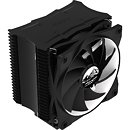
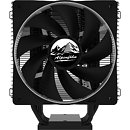
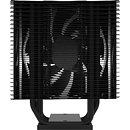
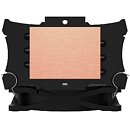
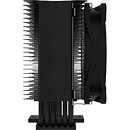
30 Comments on Alpenföhn Intros Matterhorn Threadripper CPU Cooler
But yeah, that's it. No matter how flat, or how polished the surface is, it will never be truly, perfectly flat. Even if you lap both the CPU heatspreader and heatsink base all the way up to 3000 grit or higher, microscopic imperfections will exist... so you'll be getting more metal to metal contact than you did before, especially if at least one of your surfaces was really jacked up, but paste is still required to fill in what's left. Though you would use a much smaller amount of paste than you did before you lapped anything. Too much paste is actually a bad thing, because at some point you'll actually have paste getting in the way of your metal to metal contact. That's why you use less paste after lapping, because the surfaces are flat(er) and it doesn't take much to fill in what's left. Use the same amount you did before and it'll actually be detrimental.